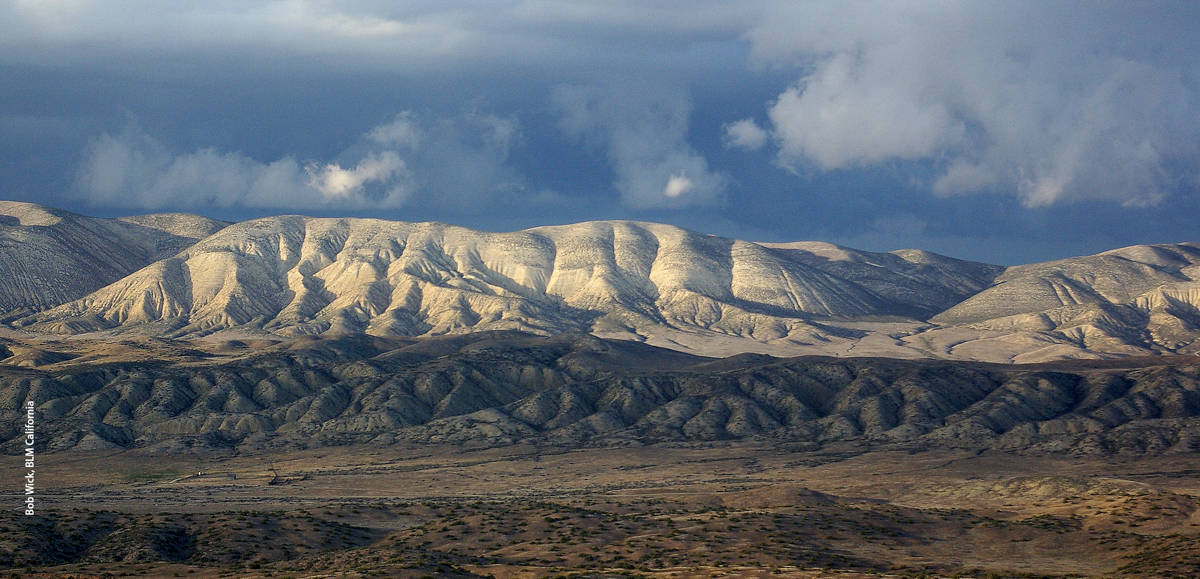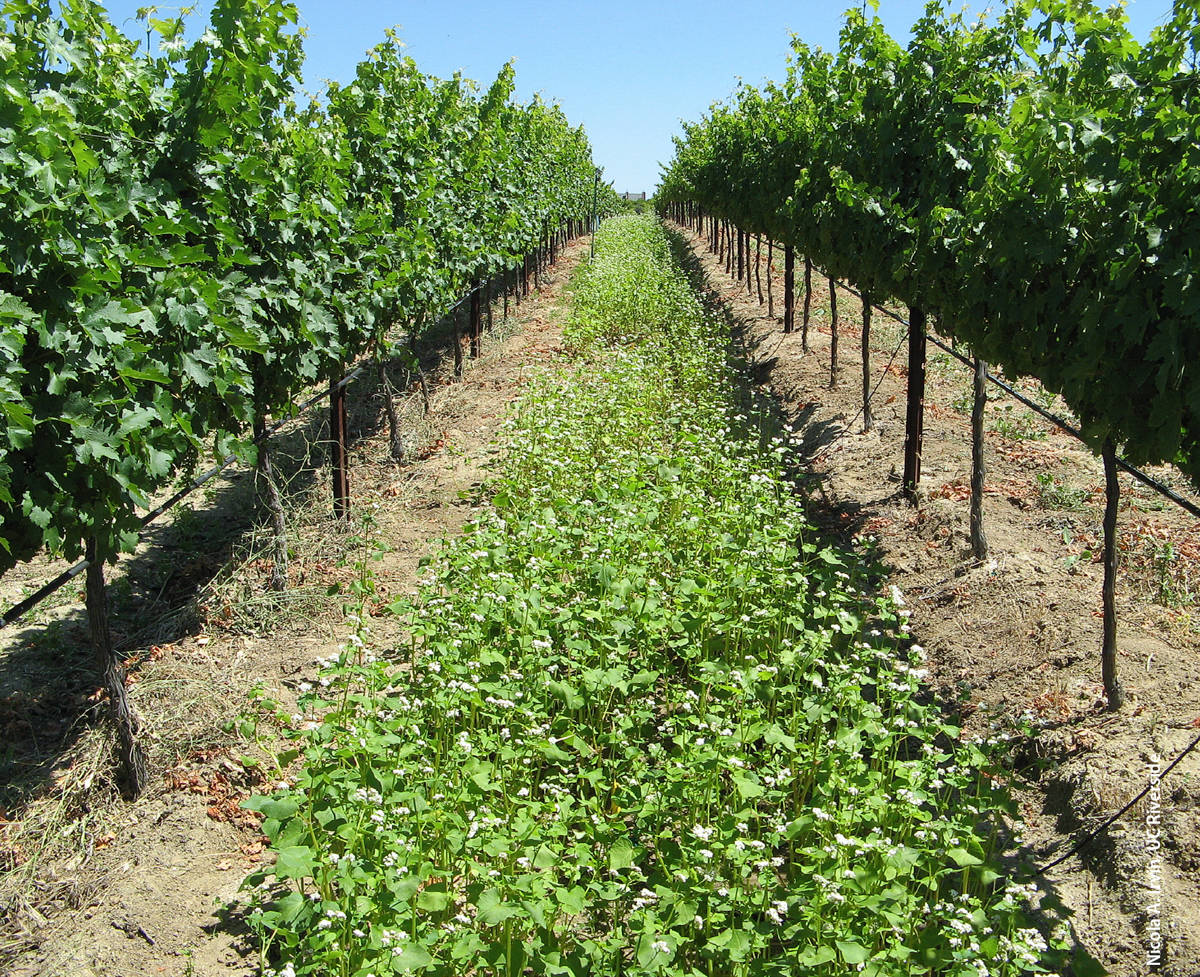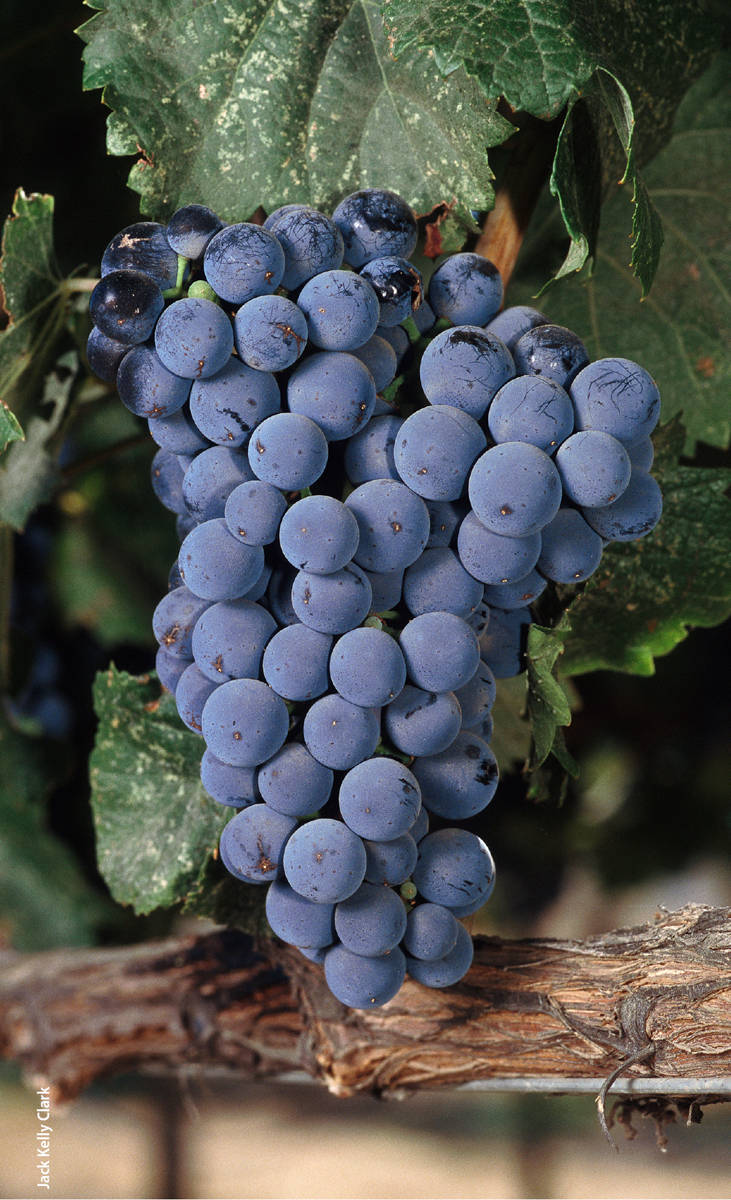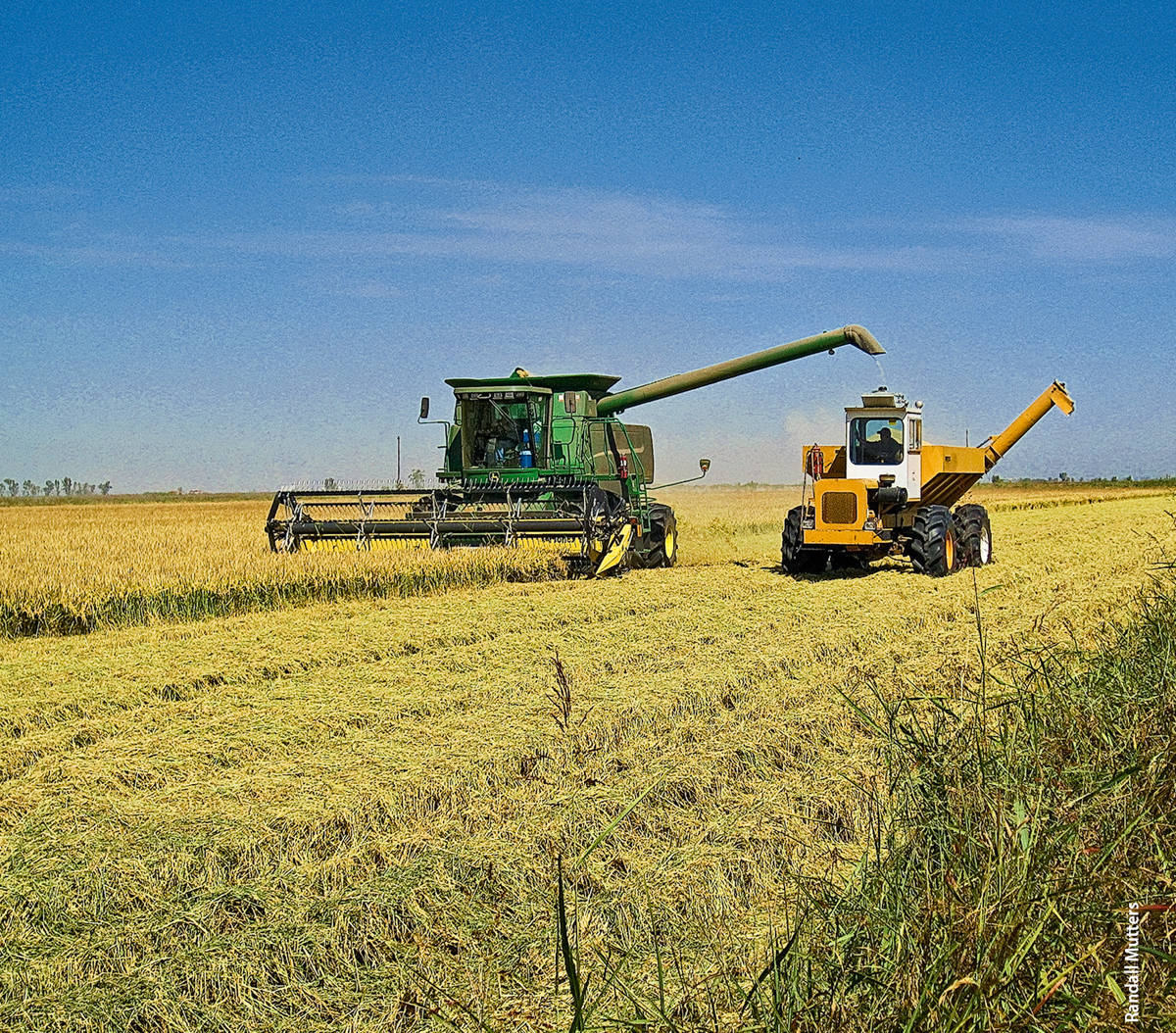All Issues
Research highlights
Publication Information
California Agriculture 72(4):196-199. https://doi.org/10.3733/ca.2018a0034
Published online December 17, 2018
PDF | Citation | Permissions
NALT Keywords
Summary
Recent articles from the Agricultural Experiment Station campuses and UC ANR's county offices, institutes and research and extension centers
Full text
Extreme drought advantages locally rare species
Climatic volatility is altering ecosystems across the planet, but little research has attempted to quantify the effects of extreme climate events on the composition of ecological communities. A team of researchers led by Laura Prugh of the University of Washington, and including Justin Brashares of the Department of Environmental Science, Policy and Management at UC Berkeley, set out to redress this gap in research. Working in San Luis Obispo County's Carrizo Plain National Monument (a semi-arid grassland), they examined the responses of 423 species to California's 2012–2015 drought, California's driest period in the last 1,200 years.
The researchers categorized each species they studied as a “winner” or a “loser,” depending on whether the species increased or decreased in abundance; a third category was established for species whose abundance was unaffected by the drought. Eighty-five species emerged as losers; 12 came out as winners; and 239 showed no significant response to the drought (87 species present for one year only were excluded). Winners included seven species of insect, one plant, one reptile, two birds and one rodent. Plants showed the most significant response to a single year of drought, whereas extended drought had its greatest impact on carnivorous animals.
Working in the Carrizo Plain National Monument, a semi-arid grassland in San Luis Obispo County, researchers examined the responses of 423 species to California's 2012–2015 drought, California's driest period in the last 1,200 years.
The researchers report that locally rare species were more likely to “win” and abundant species more likely to “lose.” This tendency, they say, was remarkably consistent across taxa and drought durations, suggesting that drought “indirectly promote[s] the long-term persistence of rare species by stressing dominant species throughout the food web.” The researchers note that while extreme drought “can lead to substantial short-term declines in the abundance and diversity of species across taxonomic groups,” such disturbances — by inducing occasional die-offs among dominant species and thus providing rare, fast-growing species with opportunities to thrive — “may play a vital role in the long-term maintenance of biodiversity.”
Prugh LR, Deguines N, Grinath JB, et al. Ecological winners and losers of extreme climate change in California. Nat Clim Change. 2018. 8(9):819-24. https://doi.org/10.1038/s41558-018-0255-1
Controlling fumigant emissions and nematodes with deep injections and biochar applications
Fumigation is a means of controlling harmful organisms in soil, including plant parasitic nematodes. During fumigation, liquids injected into the soil volatize into gas that spreads through the soil's air space. But these gases can also escape into the air, degrading air quality and potentially harming human health. Regulators have developed and continue to amend rules limiting fumigant emissions — and the plastic films sometimes used to control emissions carry significant costs. Growers' continued ability to practice fumigation may therefore depend on finding new ways to reduce emissions.
A group of researchers led by Suduan Gao of the U.S. Department of Agriculture and David Doll of UC Cooperative Extension (UCCE) in Merced County — and including (among others) Becky Westerdahl of the Department of Entomology and Nematology at UC Davis and Bradley Hanson of the Department of Plant Sciences at UC Davis — set out to determine if emissions could be reduced by injecting fumigants deeper in the soil than is customary. Building on previous research into soil-sealing techniques and materials, in this work they also sought to determine if applications of biochar, a carbon-rich substance derived from biomass, could further reduce fumigant emissions to the atmosphere. In addition, because pest control drives fumigation decisions, they sought to determine the effects of deep fumigation and biochar application on fumigant distribution in soil and on control of plant parasitic nematodes, which are often a cause of poor orchard establishment and performance.
Working at the site of a removed almond orchard in Stanislaus County, the researchers conducted experiments involving several variables: whether fumigant was injected at a standard depth (18 inches), or a deeper one (26 inches); whether it was applied at standard rates, or lower ones; and whether the soil was covered with plastic film or biochar, or not covered at all. Fumigant emissions were measured for more than a month after application and fumigant concentration in the soil pore space was measured to a depth of 125 centimeters for several months.
Results showed that deep injection enhanced fumigant delivery to depths below 60 centimeters while also resulting in significantly lower peak emissions compared to standard injection depth. Data also indicated that biochar amendments can significantly reduce fumigant emissions without reducing nematode control — though the researchers say that additional research is needed to validate results under a range of field conditions.
Gao S, Doll DA, Stanghellini MS, et al. Deep injection and the potential of biochar to reduce fumigant emissions and effects on nematode control. J Environ Manage. 2018. 223:469-77. https://doi.org/10.1016/j.jenvman.2018.06.031
Measuring dispersal of grape pests' natural enemies from a buckwheat cover crop
Key pests affecting grapes in California include leafhoppers, mites and thrips. These pests' natural enemies include spiders, leafhopper parasitoids, predatory thrips and minute pirate bugs. When pests' natural enemies disperse from cover crops, they can provide varying levels of pest control in crops such as grapes. To determine the efficacy of cover crops for pest control, it is important to determine the distances over which natural enemies will move from cover crops and into high-value crops.
Scientists with UC Riverside and USDA-ARS studied a Southern California organic vineyard to determine how far natural enemies of grape pests disperse when buckwheat is used as a cover crop. Results showed that spiders, predatory thrips and minute pirate bugs dispersed 9 meters from marked buckwheat refuges. The researchers suggest that buckwheat could be planted in California vineyards every sixth or 10th row, but caution that supplying water to the cover crop could lead to negative effects such as reduced brix levels and an increased risk of insect pest and disease prevalence.
A team of researchers — led by Nicola Irvin, a biological control specialist and research scholar in the Department of Entomology at UC Riverside, and including Mark Hoddle, a biological control specialist and principal investigator in the same department — set out to determine the distances over which the natural enemies of grape pests will disperse when buckwheat is established as a cover crop in a vineyard. Working in a Southern California organic vineyard, the researchers sprayed flowering buckwheat cover crops with a “triple mark” solution containing yellow dye, casein protein and albumin protein. The researchers then placed transparent sticky traps at predetermined locations around the vineyard, capturing marked natural enemies for examination under a dissecting microscope.
Results showed that spiders, predatory thrips and minute pirate bugs dispersed 9 meters from marked buckwheat refuges. Twenty-two percent of marked leafhopper parasitoids were captured between 18 and 30 meters from marked buckwheat plots. Some arthropods were able to cross 36-meter buffer zones devoid of vegetation. According to the researchers, buckwheat refuges could therefore be planted in California vineyards every sixth or 10th row. They caution, however, that planting cover crops in Southern California's arid grape production areas and supplying supplemental water to the cover crop could lead to negative effects such as increased risk of insect pest and disease prevalence, increased management costs, and reduced brix levels.
Irvin NA, Hagler JR, Hoddle MS. Measuring natural enemy dispersal from cover crops in a California vineyard. Biol Control. 2018. 126:15-25. https://doi.org/10.1016/j.biocontrol.2018.07.008
Measuring chemical changes during aging of malbec wine
Phenolic compounds — a large group of secondary metabolites in plants — play a fundamental role in establishing a wine's sensorial characteristics, antioxidant capacity and ultimately its quality. Factors that affect a wine's concentration of phenolic compounds include grape variety, region of origin and duration of aging. Bottle aging, required for optimal quality in some red wines, allows diverse chemical reactions to occur, with phenolic compounds evolving and concentrations of elements changing. But no studies examining these chemical processes during the aging of malbec red wines had been conducted. A team of researchers led by Federico Agazzi of Argentina's Catena Institute of Wine took up this research topic, examining phenolic compounds and also the elemental changes that can affect a wine's stability during aging. The team included UC Davis Assistant Adjunct Professor Jenny Nelson (Department of Viticulture and Enology), Courtney Tanabe (doctoral candidate in the Agricultural and Environmental Chemistry Graduate Group at UC Davis), UC Davis Staff Research Associate Carolyn Doyle (Department of Viticulture and Enology) and UC Davis Professor Roger Boulton (Department of Viticulture and Enology and Department of Chemical Engineering).
To find out how the bottle aging process affects phenolic compounds and concentration of elements in red wines, a team of researchers compared wines produced from malbec grapes grown in Argentina and California. Their findings show that wines can be distinguished by region after five years of aging.
The team examined malbec wines produced from grapes grown in six districts in Argentina and seven districts in California. The team's research aims were to identify malbec's chemical fingerprint after five years of aging and to compare the chemical composition of aged malbec wine to that of malbec at the beginning of its aging process.
After five years the researchers could, when they assessed polyphenols and elemental data in combination, differentiate malbec wines by region. They observed that total polyphenol content was significantly affected by aging time. The potassium concentration of Argentine wines decreased over time while magnesium content increased. California wines showed a decrease in potassium and calcium and an increase in magnesium. Polyphenols and elemental concentrations, beyond their utility in distinguishing wines from different regions, can impact both the taste and appearance of aged wines — and thus the study's results might influence wineries' decisions regarding the aging of malbec wines.
Agazzi FM, Nelson J, Tanabe CK, et al. Aging of Malbec wines from Mendoza and California: Evolution of phenolic and elemental composition. Food Chem. 2018. 269:103-10. https://doi.org/10.1016/j.foodchem.2018.06.142
Farmers hold nuanced views regarding on-farm food loss
Food loss and waste have gained increasing attention from academics, activists, entrepreneurs, policymakers and the public. Reducing total food loss, from farm to consumption, could help produce several desirable outcomes: reduced use of scarce environmental resources, improved food security, and increased income for farmers through secondary markets. Achieving such goals will require accurate assessments of the causes of food loss and creative thinking about potential remedies.
Past research on food waste has focused almost exclusively on food loss at the consumer and retail levels, with little research devoted to food loss on farms. Two UC Davis researchers — UCCE Specialist David Campbell (Department of Human Ecology) and Kate Munden-Dixon, a doctoral candidate in the Geography Graduate Group — embarked on an exploratory project focused on farm-based food loss. Their research goal was to better understand farmers' views on the nature and extent of on-farm food loss, on the causes of on-farm food loss and on food recovery strategies' potential to reduce loss.
In a small pilot study conducted in collaboration with the California Food Waste Roundtable, the researchers conducted interviews with representatives of 12 California fruit and vegetable operations, ranging from diversified fruit and vegetable farms of less than 10 acres to an export-oriented operation covering more than 30,000 acres. The researchers, analyzing the interviews, identified several themes: Growers find it difficult to provide precise estimates of how much food loss occurs on their farms, in part because loss varies significantly across different crops and growing seasons; losses are often caused by weather, unpredictable market conditions or cosmetic standards imposed by buyers; very little of the food lost on farms ends up in landfills because many unsold food items are either tilled into the ground, used as animal feed or donated to food banks; farmers can be hesitant to partner with food recovery groups due to liability concerns or to time constraints during busy harvest seasons; and growers believe that efforts to reduce food loss should focus on the processing sector, where they believe greater food recovery possibilities exist. The researchers recommend that policy efforts to reduce food loss take farmer perspectives into account and concentrate on crops with relatively high loss percentages that are also of high utility to food banks. A UC Davis research team led by Professor Edward Spang (Department of Food Science and Technology) is currently undertaking a more detailed study of this topic.
Campbell D, Munden-Dixon K. On-farm food loss: Farmer perspectives on food waste. J Extension. 2018. 56(3): https://joe.org/joe/2018june/a5.php
Productivity growth on U.S. farms has slowed
Have U.S. farms exhibited slower rates of productivity growth in recent decades? This has been a contentious question among agricultural economists — and much depends on the answer. If U.S. farmers are to remain competitive in world markets, their farms must sustain a comparatively rapid rate of productivity growth. Meanwhile, around the world, food supplies and prices depend directly and indirectly on innovations in U.S. farming.
A research team led by Matthew Andersen of the University of Wyoming — and including UC Davis Professors Julian Alston and Aaron Smith (both of the Department of Agricultural and Resource Economics) — set out to determine through data analysis whether farm productivity growth in the United States has indeed slowed. Assembling a range of agricultural productivity measures, they performed a battery of statistical procedures and tests designed to investigate the nature of changes in the rate of productivity growth over many decades. Their results, they say, provide robust and compelling evidence that productivity in U.S. agriculture has recently undergone a structural slowdown. By one measure, over the final 10 to 20 years in the researchers' dataset, productivity grew at only half the rate that had been sustained for much of the 20th century. Of equal importance, the researchers say, is that the relatively rapid rates of productivity growth experienced during the 1960s, 1970s and 1980s can be construed as aberrations.
The researchers suggest that the slowdown in agricultural productivity might be related to an earlier slowdown in the growth of spending on agricultural research and development. They warn that failure to revive growth in U.S. agricultural productivity over the coming decades could carry serious consequences. Without renewed productivity growth, natural resource stocks will be depleted faster, less agricultural output will be produced and food will be more expensive than would have been the case with higher rates of productivity growth. The U.S. agricultural sector might suffer from diminished competitiveness with other countries. For example, farm productivity and spending on agricultural research and development have grown significantly in China and Brazil, relative to the United States, and these countries have grown in importance as agricultural producers. But if nations outside the United States experience their own slowdowns in agricultural productivity growth, a widening gap will separate growth in global demand for agricultural products from growth in global supply of those products.
An analysis of U.S. agricultural production over the past 100 years indicates that the rate of productivity growth has slowed considerably. In the final 10 to 20 years of the researchers' dataset, farm productivity grew at only half the rate that had been sustained for much of the 20th century. The researchers suggest that the slowdown could be related to an earlier slowdown in the growth of spending on agricultural research and development.
Andersen MA, Alston JM, Pardey PG, Smith A. A century of U.S. farm productivity growth: A surge then a slowdown. Am J Agr Econ. 2018. 100(4):1072-90. https://doi.org/10.1093/ajae/aay023








